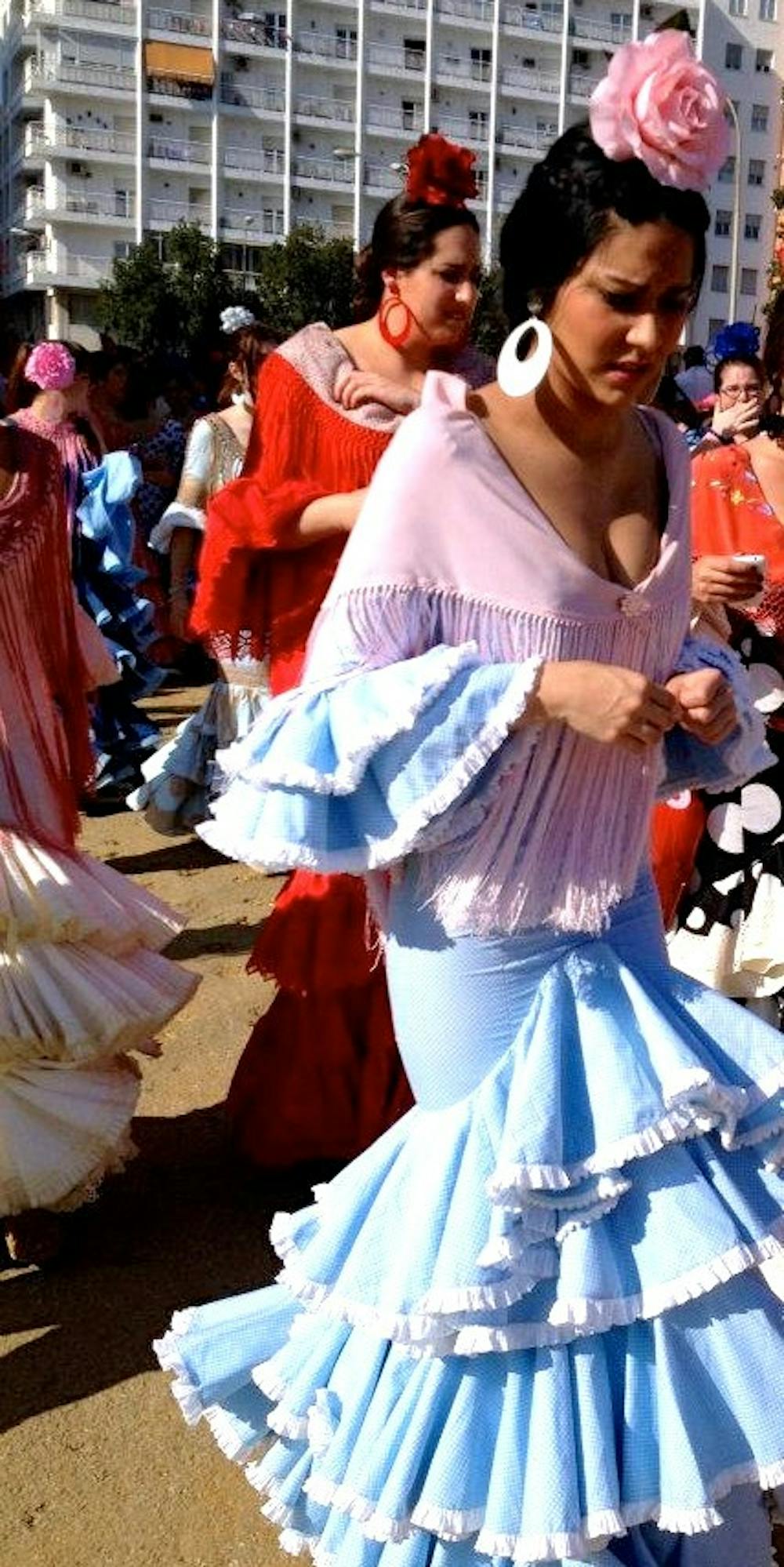SEVILLE — Two weeks after the solemn Holy Week in Seville commences a grand celebration that brings Spaniards together for a week of festivities.
Starting Monday, April 15 at midnight, Feria de Abril officially begins the moment the main structure—la puerta— lights up the fairgrounds. La puerta changes annually and this year it replicated the towers of Plaza de Espana.
Although Feria started out as an animal market in 1847, it is now a traditional festivity celebrated each year. But the men still wear clothing similar to the original members of Feria. Their uniforms consist of a suit with boots and a hat. Many of the men ride horses adorned with flowers.
For women, Feria is a week that completely contrasts Holy Week. Women slick back their hair tightly and pin it with colorful hair combs called peinetas. A flower made of fabric rests on the very top of their heads. Elisa Blanco Canton, a local in her mid-twenties, explained the process of finding the perfect Flamenco dress, which can run upwards of 300 Euro depending on the quality and style.
“Usually the women just purchase the fabric and make the dresses themselves,” she said. “The fabric is expensive though. It could be 100 Euro or more for just the fabric. I usually buy the fabric and then take the dress to a seamstress. I tell her how I want the dress to look and fit and she makes it.”
During the festival the streets are lined with hundreds of casetas—tents filled with drinking and dancing until the early morning. Originating from the men who moved their houses to live at the livestock trade, these tents have become a representation of social status.
Aristocratic families, political parties and local groups host the “invitation only” tents. While tickets are necessary to enter, if you don’t know any locals the public casetas welcome all festival guests. Canton had tickets to some casetas but explained they are hard to come by.
“A lot of the casetas are passed down within the family. Even for locals, sometimes finding tickets is impossible,” Canton said.
From 2 p.m. each afternoon until as late as 7 a.m. the next day, both locals and tourists flock to the fairgrounds. Approximately the size of two football fields, the fairgrounds host the casetas and rides, including a ferris wheel.
Similar to fairs in America, cotton candy and popcorn are found on every corner, but chocolate and churros are also popular menu items at Feria. Unique to this week is rebujito, a cocktail mix of sherry and Sprite. Walking through the aisles of the fairgrounds, almost every attendee can be seen with the refreshing drink in their hands.
Attendees in the early afternoon can watch the society members of Spain ride through the dusty roads in their horse drawn carriages. On the other side of the river, many are eager to see the inside of the Plaza de Toros de la Maestranza and witness their first bullfights which occur daily.
Raul Salas, a local in his mid-twenties, explained the atmosphere of the annual festival.
“Beautiful women, drinking, dancing, warm weather and just having fun with friends,” Salas said.


